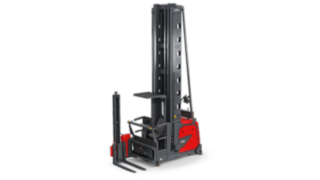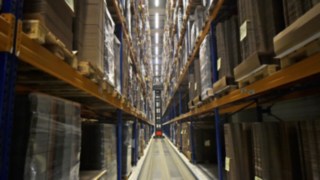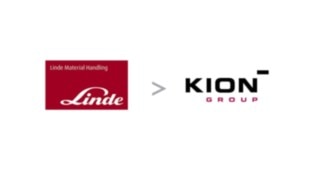The Linde Aisle Safety Assistant (ASA)
Navigating Narrow Aisles Risk-Free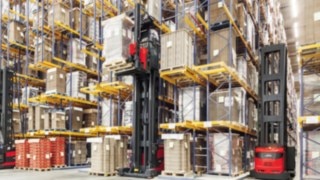
Intralogistics is faced with constantly increasing requirements due to online trade. With customer behavior changing, the number of delivery orders continues to grow while, at the same time, the batch sizes for individual orders are getting smaller and smaller. In order to meet these challenges, many companies are relying on efficient narrow aisle warehouses. Here, 18-meter racks and aisle widths of 1.8 meters ensure a warehouse density that exceeds the conventional warehouse by up to 50 percent. In these confined conditions, the aim is to work decisively, precisely and quickly, while minimizing the risk of accidents.
With the help of the aisle safety assistant (ASA) from Linde Material Handling, the very narrow aisle truck adjusts its movements to the warehouse environment. This significantly reduces the risk of collisions with the warehouse’s infrastructure as well as damage to the truck, the goods and the working environment.
Navigating Narrow Aisles Safely and Efficiently
The aisle safety assistant works similarly to the passive driver assistance systems used in cars, which help the driver to control the vehicle. With the help of the ASA, the very narrow aisle truck navigates using RFID tags embedded in the floor or barcodes that are affixed to the rack columns. This enables the truck to determine where in the warehouse the very narrow aisle truck is situated at any time. At the same time, the height sensor determines the height of the cab. The truck control unit therefore knows the truck’s exact position and current height dimensions at all times.
RFID tags or RFID transponders are small transmitters. They are embedded in the floor along the rack aisles and send information that enables the truck to accurately determine its position. Barcode markings can be used as an alternative to RFID tags. The truck’s position in the rack aisle is identified using the barcode stickers placed at the bottom of the rack columns.
With the ASA, different zones can be defined for each rack aisle that restrict certain truck movements for safety reasons. For example, the speed can be reduced automatically in certain areas, such as when crossing thresholds or expansion joints. During commissioning, these restrictions are stored on a three-dimensional map.
In order to avoid collisions, obstacles that protrude into the rack aisle are marked on the digital map with their position and dimensions. If the truck approaches the marked area, the ASA prevents the driver from driving into it. The system knows the exact dimensions of each truck at all times, including the mast, cabin and fork position and stops the very narrow aisle truck automatically, before it reaches the obstacle.
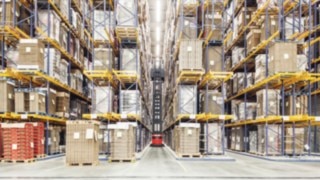
Strong Guidance
The aisle safety assistant (ASA) uses RFID tags or barcodes to determine its horizontal position in the aisle and reacts to unevenness in the floor as well as obstacles in the racks, on the floor or on the ceiling, and limits certain driving functions—such as speed, lifting height and fork extension—in those areas.
Features of the Aisle Safety Assistant
-
Dynamic braking at the end of the aisle
-
Locally restricted speed reduction
-
Collision prevention by defining obstacles
-
Local lowering lock
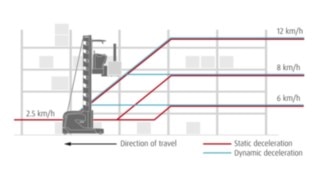
Dynamic braking at the end of the aisle
The ASA always brakes the truck at the optimal time in order to reach the desired speed or stop at the end of the aisle.
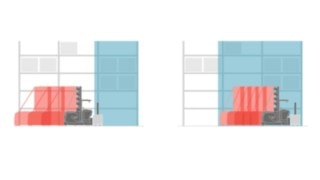
Locally restricted speed reduction
The graphic shows the speed of the truck before and within a braking zone. In defined braking zones, the truck reduces its speed to a defined value. This reduces damage to goods and the truck.
Collision prevention by defining obstacles
By defining the obstacles’ dimensions precisely—horizontally and vertically—in the ASA software, the truck can be prevented from entering this area.
Local lowering lock
The truck either does not lower the cab at all or only to a defined height in the individually defined areas.
Benefits at a Glance
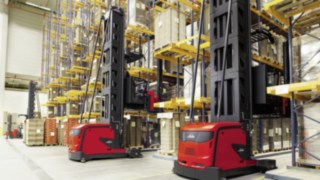
- Less damage to rack and goods
- Less damage to the truck
- Lower repair costs
- Higher pallet turnover thanks to reduced downtimes
- Increased safety for operators
- Flexible adjustment if the warehouse changes
The aisle safety assistant can be used alone or in combination with Linde Warehouse Navigation . Linde Warehouse Navigation enables time savings of up to 25 percent and chooses the optimal route to the destination.
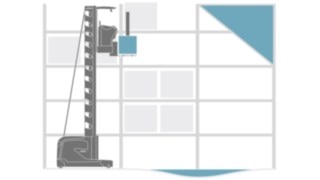
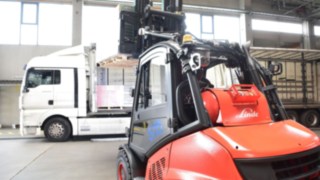
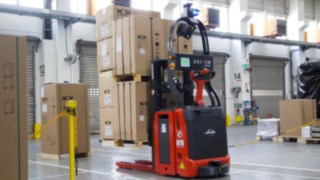
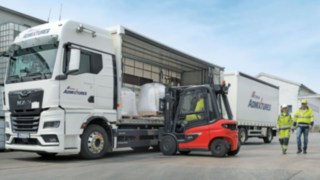
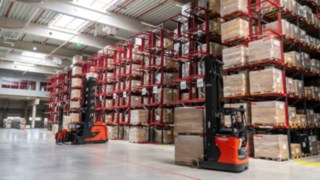
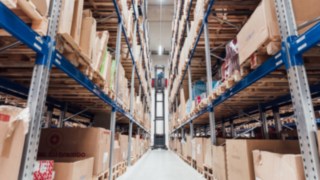
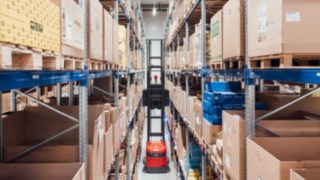
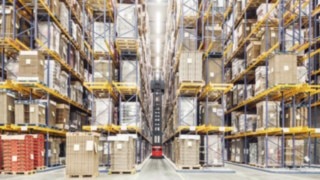
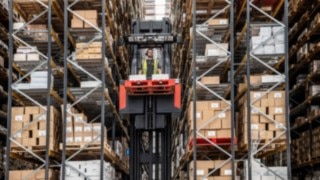
-moving-storage-4617_1083_CX_16x9w320.jpg)
